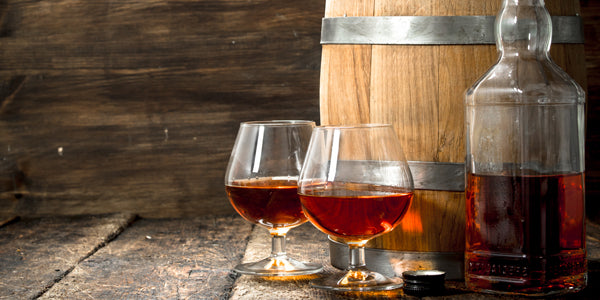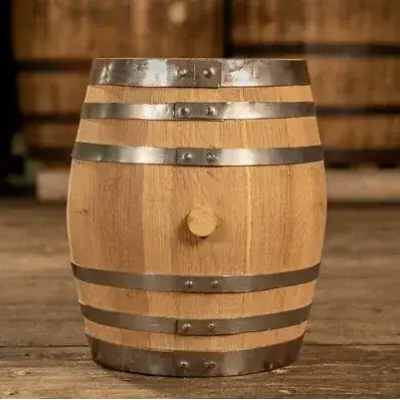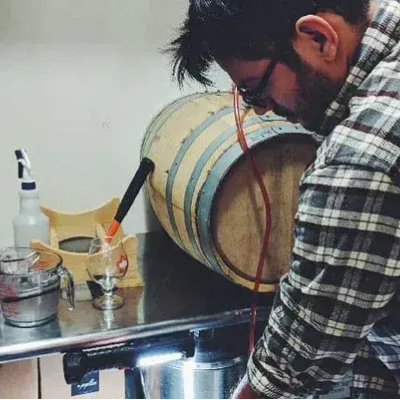How to barrel-age beer, spirits, cocktails or other beverages
July 1st, 2021

You’ve gone and purchased a small barrel – or someone thoughtfully gave it to you as a gift. Now you’re probably racing to fill it with a choice beverage, or you’re wondering what the heck you can do with it.
If you fall into the latter category, then congratulations – you’re now the proud owner of a pretty awesome vessel that can age and churn out some delicious barrel-aged cocktails and spirits. Anyone in the former category is probably already aware of this, but maybe you’re here looking for some ideas or a guide for how to barrel-age spirits, cocktails and other beverages.
Either way, you’re in the right place. We’ve got a boatload of pointers and tips for you, no matter how familiar you are with new, small barrels.

BARREL SIZE MATTERS
Before we dive right into the walkthroughs and tips for how to age spirits, cocktails and just about anything else in a new, small barrel, you need to know that their size makes a difference.
Because we’re working with smaller barrels, the aging process gets changed up quite a bit. This is due to the fact that a higher proportion of the liquid inside is actually touching the surface of the barrel. Whatever you put inside is going to take on more of the wood’s color and notes of oaky and vanilla flavor a lot faster.
However, while faster aging has its advantages – like not having to wait as long to enjoy your beverage – it also has its disadvantages. The biggest downfall is that you can’t leave the contents inside a small barrel as long as you can a full-sized one.
Because smaller barrels can’t age liquids indefinitely, keep anything in them too long and what at first was a pleasant oak flavor quickly becomes an overpowering woody taste. Make sure you sample often and have a container ready when it’s time to transfer.
SWELL TO PREVENT LEAKS
Size isn’t the only difference you need to know about. The fact that these are brand new changes things, too.
New barrels may have some extra char on the inside. Rinse them three or four times to get rid of any loose, charred wood.
New barrels have also never contained any liquid, so they’re completely dry. Filling when dry is asking for leaks. They have to be swelled first. Swelling a barrel tightens staves and makes sure you won’t have any leaks.
To swell a new, small barrel, simply fill it full of hot water (about 180º degrees) and insert a bung in the bunghole. You’ll probably notice a few leaks, but don’t worry, that should stop as the staves start to swell. Just keep it full of water until that leaking stops.

Note: This could take anywhere from an hour to a week or more – although smaller barrels tend not to take quite as much time to tighten.
Your barrel might need some extra care, too, so be sure to read our storage and care post.
WHAT YOU CAN AGE AND FOR HOW LONG
So, now that we’ve shared that important information, we’re ready to get to the fun stuff: aging! In reality, we’re going to do more flavoring than aging, since the beverage won’t be in the barrel all that long anyway. You can fill a new, small barrel with just about anything you want. You can age things other than liquid, too.
For this post, though, we’re going to focus on what these little casks do best: aging beer, spirits, cocktails and other beverages.
As a general rule of thumb, most liquids will age for weeks, not years like most distilleries take to age their products. Some, like an unaged whiskey or very high ABV beverage, may be able to age for a month or more.
At the end of the day, how long you age is up to you. Be sure to take samples to get the flavor just right! Small barrels can make a liquid too oaky very quickly.


FILLING AND DUMPING
Ready to get started? Get your hands on whatever type of whiskey, cocktail, beer or whatever spirit or beverage is going inside.
Before you dump it in, though, make sure the spigot (if applicable) is in the off position and place the barrel on its stand (again, if applicable). If you don’t have a stand, then we recommend finding some way to ensure the barrel won’t roll because you’ll want to keep it on its side.
Once that is all set, it’s time to fill it up! Try to get the barrel as full as possible, as you may lose some liquid to evaporation depending on how long you plan to age. Replace the bung to seal the barrel.
Now the waiting begins. You can go ahead and start testing the contents whenever, but you’re probably looking at about a week before you notice any sort of difference. It’s safe to say that the smaller the barrel, the less amount of time it will take before your beverage is all set.
WHAT TO DO WHEN
YOUR BEVERAGE IS READY
When you’ve decided your spirit or cocktail is ready to go, it’s probably best to dump it out of the barrel and into a glass container. You can use a cheesecloth during the transfer process to remove any bits of char that come out as you’re emptying the barrel.

Time to get some barrels
Let’s get your next barrel-aged cocktail, spirit or beer started! First step: Buy the right small barrel for your liquid.
Have any questions? Our team is more than happy to help! Give us a call at 402-704-8226 or send us an email!
Cheers!🍻

ABOUT THE AUTHOR:






